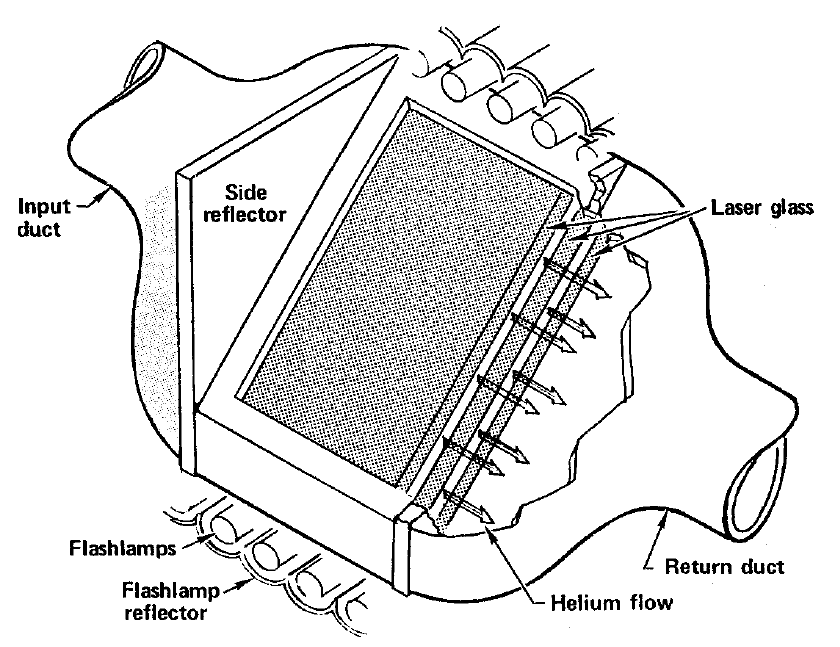


 الفيزياء الكلاسيكية
الفيزياء الكلاسيكية
 الكهربائية والمغناطيسية
الكهربائية والمغناطيسية
 علم البصريات
علم البصريات
 الفيزياء الحديثة
الفيزياء الحديثة
 النظرية النسبية
النظرية النسبية
 الفيزياء النووية
الفيزياء النووية
 فيزياء الحالة الصلبة
فيزياء الحالة الصلبة
 الليزر
الليزر
 علم الفلك
علم الفلك
 المجموعة الشمسية
المجموعة الشمسية
 الطاقة البديلة
الطاقة البديلة
 الفيزياء والعلوم الأخرى
الفيزياء والعلوم الأخرى
 مواضيع عامة في الفيزياء
مواضيع عامة في الفيزياء|
Read More
Date: 11-4-2016
Date: 24-1-2021
Date: 31-1-2021
|
Disk Amplifiers
Solid-state glass-disk amplifiers were considered very early in the development of high-brightness pulsed laser systems in order to solve problems of cooling, aperture size, gain uniformity, and pumping efficiency. In a disk laser amplifier pump radiation is distributed uniformly over the faces of the slab.
Pump-induced slab heating is uniform laterally, thus allowing transverse temperature gradients to be minimized. Such temperature gradients give rise to distortion in the slab just as in the rod geometry. In contrast to the rod geometry, however, the transverse gradients in the slab geometry arise only from spurious effects in pumping and cooling, whereas in the rod geometry, transverse temperature gradients arise from the principal cooling mechanism.
The Brewster angle disk lasers have been primarily developed for very high peak-power and relatively low average-power operation, with the slabs and coolant all approaching thermal equilibrium in the interval between pulses. To operate the Brewster angle slab laser at high average power requires adequate cooling as, for example, with forced convection over the faces. In addition, since the laser beam must pass through the coolant, the problem of thermal distortion in the coolant must be dealt with. This operating mode requires that the slabs be sufficiently thin so that the cooling time is several times less than the laser repetition period. Figure 1 shows a configuration of a gas-cooled disk module which could potentially be developed for high average power operation, particularly if the Nd : glass slabs are replaced with crystalline laser host materials.

FIGURE 1. Concept of a gas-cooled disk amplifier module designed for high average power operation.



|
|
|
|
علامات بسيطة في جسدك قد تنذر بمرض "قاتل"
|
|
|
|
|
|
|
أول صور ثلاثية الأبعاد للغدة الزعترية البشرية
|
|
|
|
|
|
|
مدرسة دار العلم.. صرح علميّ متميز في كربلاء لنشر علوم أهل البيت (عليهم السلام)
|
|
|